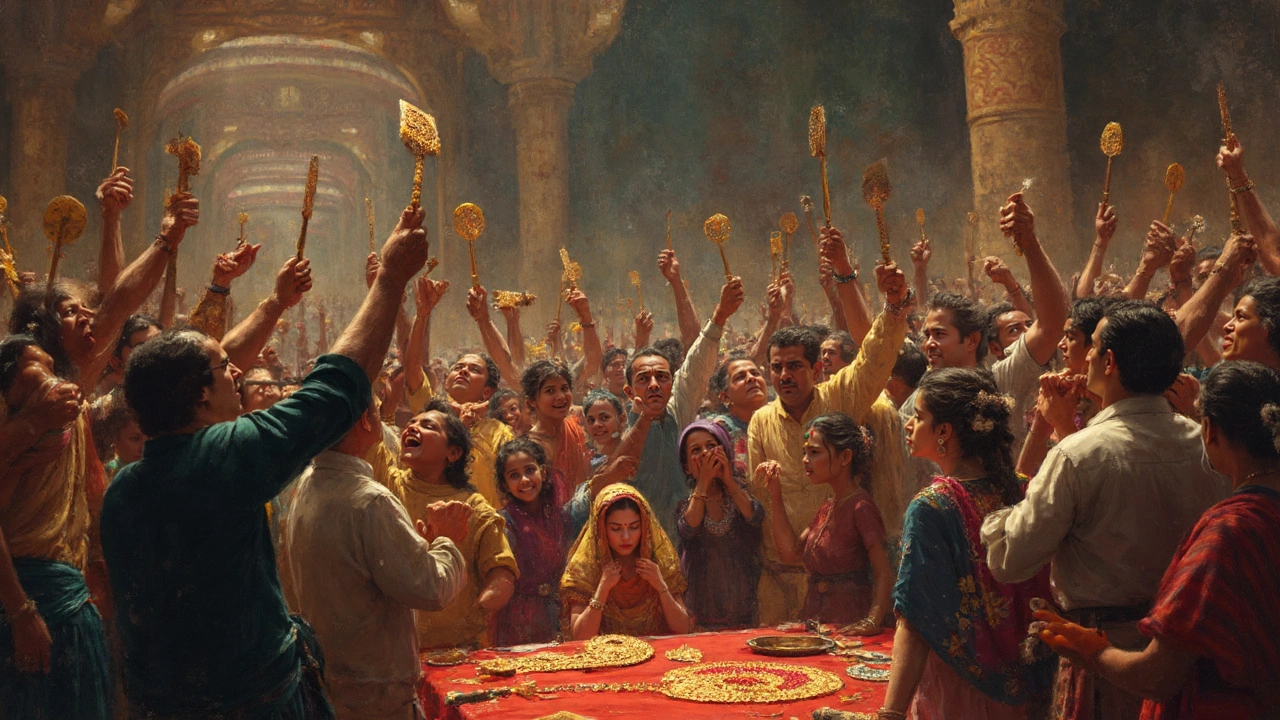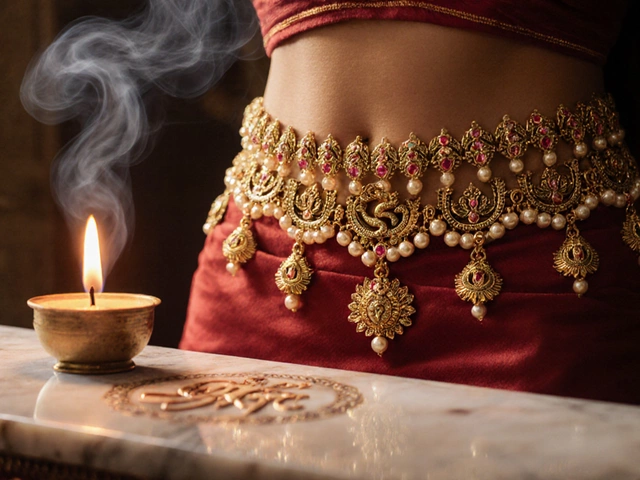
Ever stared at a family heirloom and wondered, 'How much is this really worth?' Whether it's that dazzling vintage ring or an intricately designed bracelet your great-aunt used to wear, knowing where to sell your antique jewelry makes a world of difference. After all, unless you’re planning a heist movie, getting top dollar is the goal, right?
The process of letting go your antique treasures can actually be rewarding, if you know where to look. The trick lies in understanding the true value of your pieces and not just accepting the first offer that comes your way. From experienced jewelers to enthusiastic collectors, different buyers are on the hunt for unique finds, and trust me, they’re willing to pay handsomely.
Alongside professional appraisal, knowing the key players in the market and how to boost the appeal of your jewelry can turn your old gems into a small fortune. And in today's digital age, there are more ways than ever to connect with potential buyers. So, buckle up, because getting the most buck for your bling doesn’t have to be complicated.
- Understanding Antique Jewelry Value
- Top Buyers for Your Treasures
- Boosting Your Jewelry’s Worth
- Common Selling Platforms
- Tips for an Effortless Sale
Understanding Antique Jewelry Value
Alright, so you've got this piece of antique jewelry, and you're probably wondering how to figure out its worth without having a degree in jewel appraising. The value of antique jewelry isn't just about the bling factor or how popular it looks in today’s fashion magazines. It's about clawing into its unique story, and understanding several key aspects.
First off, age matter a lot in the antique game. Generally, pieces over 100 years old fall into the 'antique' category. But don’t fret if your jewelry is a bit younger; vintage is still trendy and often valuable.
Then there’s the maker. Jewelry with hallmarks from prominent designers fetch higher prices. If it’s a Cartier or a Tiffany piece, you've already hit an attractively high note.
The materials used can significantly impact value too. For example, platinum-set pieces or those with rare gems, like Burmese rubies or Kashmir sapphires, are big winners. The condition of the jewelry also plays a role. Well-preserved items nearly always see more dollars.
And since we're about details, the jewelry's provenance—the story that accompanies the piece—can add an emotional pull for buyers, often leading to a higher sale price. A simple ‘belonged to Great Aunt Judy’ won't cut it unless Judy has a story that makes waves.
If you’re up for some number crunching, here's a helpful table breaking down common metals and their average value, which can give you an idea of the base worth of your antique jewelry:
| Metal | Approximate Value (per gram) |
|---|---|
| Gold | $70 |
| Platinum | $50 |
| Silver | $0.70 |
It might feel like a lot to digest at first, but getting familiar with these factors will make the next steps—actually selling your antique jewelry—much smoother. It's all about piecing together a puzzle that paints the full picture of that old necklace you found in the attic. And chances are, it’s got a lot more to it than you first thought!
Top Buyers for Your Treasures
When it comes to selling your antique jewelry, knowing who the top buyers are is half the battle. Not all buyers are created equal, and some are definitely going to offer more cash than others. Let's break down who you should be eyeing when you're ready to part with your cherished pieces.
Specialized Antique Dealers are usually a fantastic place to start. These guys know their stuff and appreciate the craftsmanship behind each piece, which can often translate into bigger bucks for you. Dealers who specialize in specific eras or styles might even pay a premium for pieces that fit their niche.
Collectors are another group to keep on your radar. These folks live and breathe jewelry, and they're often looking for one-of-a-kind pieces to add to their collections. A passionate collector might just be your best bet for top offers, especially if your piece is rare or has an interesting history attached to it.
Don't forget to consider auction houses. Places like Sotheby’s or Christie’s have specialized auctions for antique jewelry where bidding wars can drive up prices significantly. Selling through an auction house might take a little longer given the process, but the potential payoff can be massive.
There's also a strong case for checking out online platforms. Websites like eBay, Ruby Lane, or even Etsy have sections dedicated to antique jewelry. Here, visibility is key, and you can reach buyers from around the world. Just make sure to include detailed descriptions and high-quality photos to stand out.
No matter where you choose to sell, always remember to compare offers and do your research. A little homework now can mean a lot more money in your pocket later. So go ahead, find those top buyers, and make sure your treasures get the recognition—and the money—they deserve.

Boosting Your Jewelry’s Worth
So you've got this stunning antique jewelry piece, and you’re wondering how to make it even more appealing to buyers. The key to fetching a better price isn’t just about having something old—it’s about making it shine in the eyes of the potential buyer.
First off, get your jewelry thoroughly cleaned and polished. A little sparkle can highlight its unique attributes, which might currently be hidden under years of dust or tarnish. If you're not sure how to clean antique pieces without damage, it's worth hiring a professional who specializes in restoring vintage jewelry.
Next, documentation can be a game-changer. If you have any paperwork like appraisals, original receipts, or certificates, these can add a lot of value to your piece by showing authenticity and provenance. If you don't have any documentation, consider getting a new appraisal by a reputable appraiser. This can not only confirm the value but often provides a fascinating history of your piece's design and materials.
Consider making small, tasteful repairs if needed. A loose stone or broken clasp shouldn’t be a deal-breaker, but buyers might see it as a hassle. Fixing these can prevent lowball offers, although it's important to ensure any repairs don’t decrease authenticity.
- Clean and polish your jewelry professionally.
- Secure documentation for authenticity.
- Repair minor issues without altering originality.
Knowing current trends is a bonus. Sometimes specific styles or eras of jewelry become hot commodities, driving prices up. Keep an eye out for these trends through online platforms and communities focused on antique jewelry. Who knows, that art deco piece might suddenly be in high demand!
Lastly, presentation is everything. High-quality photos can make your jewelry pop in ads and listings. A simple backdrop and good lighting—done with a standard smartphone these days—can highlight your piece’s character and craftsmanship, making potential buyers see what you see in your treasured items.
| Boosting Strategy | Impact |
|---|---|
| Professional Cleaning | Improves visual appeal, highlights features |
| Documentation | Proves authenticity and increases buyer confidence |
| Minor Repairs | Prevents undervaluation due to perceived damage |
By upping your game with these tips, you’ll not only enhance the allure of your antique pieces but also attract buyers ready to pay what your jewelry truly deserves.
Common Selling Platforms
So, you're ready to part ways with that antique jewelry. Now, where do you find the perfect buyer? The platform you choose can seriously impact how much cash you end up with, and there are quite a few options out there that cater to different needs and comfort levels.
First up, let's talk about reputable auction houses. These guys have been around forever, and they attract serious collectors who know exactly what they're looking for. Think of places like Sotheby’s or Christie’s, known for grabbing top-dollar bids on unique treasures. Just remember, there might be fees involved, so always check the fine details before diving in.
For those who want something a bit more modern, online platforms are a fantastic way to reach a global audience without even leaving your couch. Websites like eBay and even dedicated seller platforms like RubyLane focus specifically on antiques and can fetch hefty sums if you market your piece right. Just make sure to write a killer description and share plenty of good-quality photos.
And don’t forget about specialized jewelry dealers. These pros buy directly and can often offer a straightforward sale with little hassle. It's a great way to get a quick sale if you're short on time. Just shop around to find someone who knows their stuff about vintage pieces.
Local jewelers can also be an option, especially if your piece is more about sentimental value combined with solid craftsmanship. They might not always offer the highest prices due to overheads but build a relationship, and they might be willing to negotiate a bit.
Lastly, don’t underestimate the power of social media. Yes, you heard that right. Platforms like Instagram or Facebook Marketplace can connect you with individuals hunting for unique finds without platform fees eating into your profits. It might require more effort to establish trust with potential buyers, but for some, it's totally worth it.
| Platform Type | Examples | Considerations |
|---|---|---|
| Auction Houses | Sotheby's, Christie's | High fees but high-value sales |
| Online Marketplaces | eBay, RubyLane | Easy, global reach |
| Jewelry Dealers | Local specialists | Direct purchase, quick sale |
| Social Media | Instagram, Facebook | No fees, trust-building |
Whichever route you choose, make sure to do your homework to get the best bang for your antique buck!

Tips for an Effortless Sale
Let’s talk about making the process of selling your antique jewelry a breeze. It’s not just about getting the highest bid but also ensuring it's straightforward and stress-free. Get comfortable, grab a coffee, and let’s dive into some pro tips.
First things first, do your research. Understanding what makes your jewelry special is key. This doesn't mean you have to become a gemologist overnight, but knowing whether your piece is Victorian or Art Deco can make a big difference in appealing to buyers.
Next up, get a professional appraisal. Sounds obvious, but you’d be surprised how many folks skip this step and regret it later. A detailed appraisal reveals the value based on factors like rarity, condition, and craftsmanship. It gives you a strong negotiating ground and ensures you don't get ripped off.
Think about sprucing up your jewelry a bit. It might be worth having it professionally cleaned to let its true beauty shine. Remember, first impressions count, and a sparkling piece is way more attractive to buyers.
Now, make the best use of online platforms. Sites like eBay and specialist auction houses cater to niche markets and collectors who appreciate antique jewelry. Some people swear by Etsy for unique, handmade, or vintage items.
- eBay has a broader audience but requires really good photos and accurate descriptions.
- Etsy targets buyers looking for unique and vintage finds.
Consider your buyer options carefully. Jewelers and collectors often know what they’re looking for and will pay a pretty penny for the right item. But always get multiple offers before making a decision!
Check out this little nugget of info: Reports say that vintage costume jewelry is experiencing renewed interest, with some items rising 20% in value over the past five years. It’s worth digging through those jewelry boxes and making sure nothing gets overlooked.
And finally, keep an eye on trends. It’s amazing how often fashion reboots make specific eras popular again, driving up prices of particular styles.
There you have it, a few simple steps to turn your antique jewelry sale from a headache into a hassle-free experience. Keeping these tips in mind ensures you’re not only cashing in on its worth but also dodging the drama. Happy selling!








